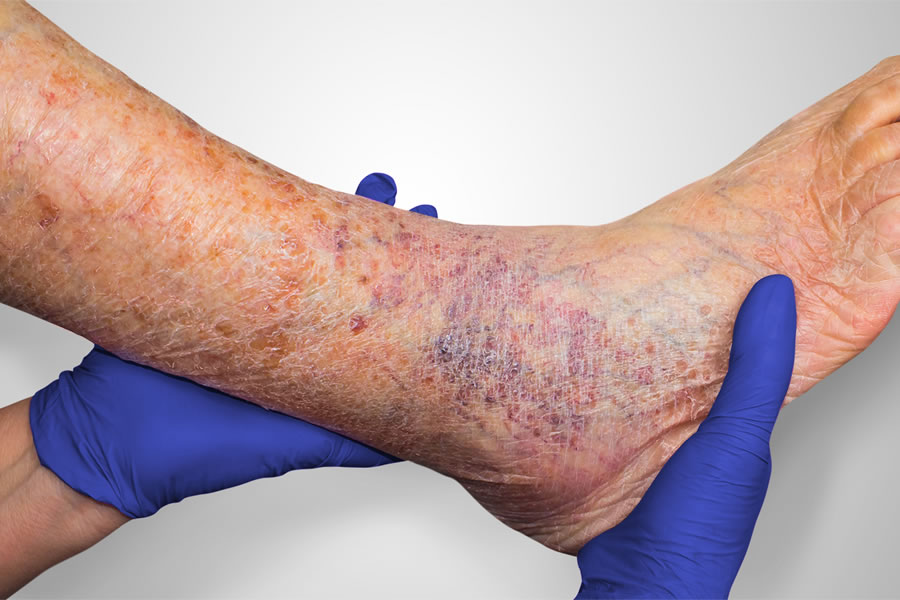Menu
- Home
- Treatments
- Our Providers
- About Us
- Patient Info
- Testimonials
- Locations
- Blog
- Financing
- Contact Us
- Home
- Treatments
- Our Providers
- About Us
- Patient Info
- Testimonials
- Locations
- Blog
- Financing
- Contact Us

Venous stasis ulcers pose a major challenge for both patients and healthcare providers. These ulcers, stemming from chronic venous insufficiency, can lead to discomfort, infection, and reduced quality of life. Understanding the nature of venous stasis ulcers is the first step toward effective management and prevention. At National Vascular Associates, we offer venous stasis ulcers wound care and treatment options so you can get back to your normal life as soon as possible. Continue reading for information that can help you recover from this debilitating condition.
Venous stasis ulcers do not occur in isolation. They are typically the result of chronic venous insufficiency, where the veins in the legs struggle to return blood to the heart. This condition leads to increased pressure in the veins, eventually causing damage to the skin and the formation of ulcers. Several factors can heighten the risk of developing these ulcers:

Recognizing these risk factors is necessary for both prevention and early intervention of venous stasis ulcers wound care.
Early detection of venous stasis ulcers can help improve treatment outcomes. Patients typically notice changes in the skin of their legs, such as:
Treating venous stasis ulcers effectively requires a multifaceted approach, focusing on healing the ulcers and addressing the underlying venous insufficiency. Our treatment strategies include:
At National Vascular Associates, we understand venous health and are committed to delivering quality care that addresses both the symptoms and causes of venous stasis ulcers. If you're experiencing symptoms or have concerns about venous stasis ulcers, don't wait. Contact our office for more details or to schedule an appointment with one of our specialists.